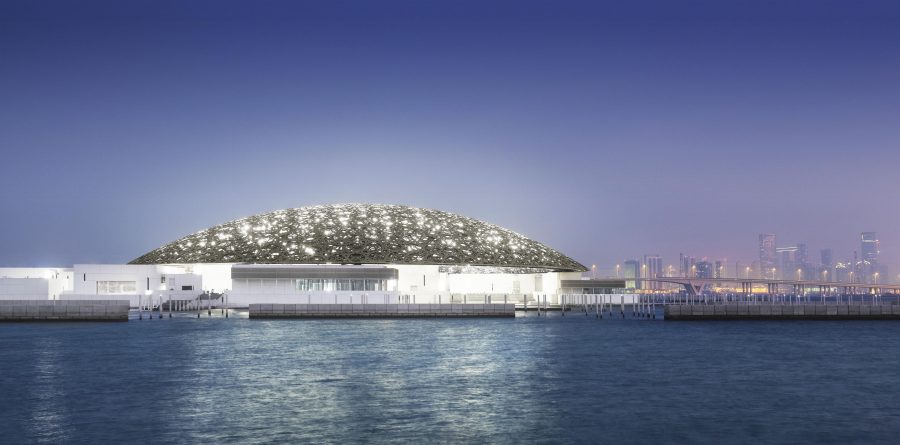Louvre Abu Dhabi is more than a museum. It is one of the most important products of inter-governmental cooperation, partnership and dialogue between France and United Arab Emirates. Even its name gives hints about the cultural synthesis that it represents; milestone of modern museology, Louvre and France on one hand, and the rising star of the international art scene, Abu Dhabi and United Arab Emirates on the other. We watched the creation of this museum step by step, and finally, we came to the end of a 10-year journey. Its first baby steps, then growth and finally completion, what we have been looking for has finally come true; Louvre Abu Dhabi opened its doors to the public on the 11th of November. From masterpieces to its marvellous building, exhibitions to programming, Louvre Abu Dhabi has already become one of the most important institutions in the World.
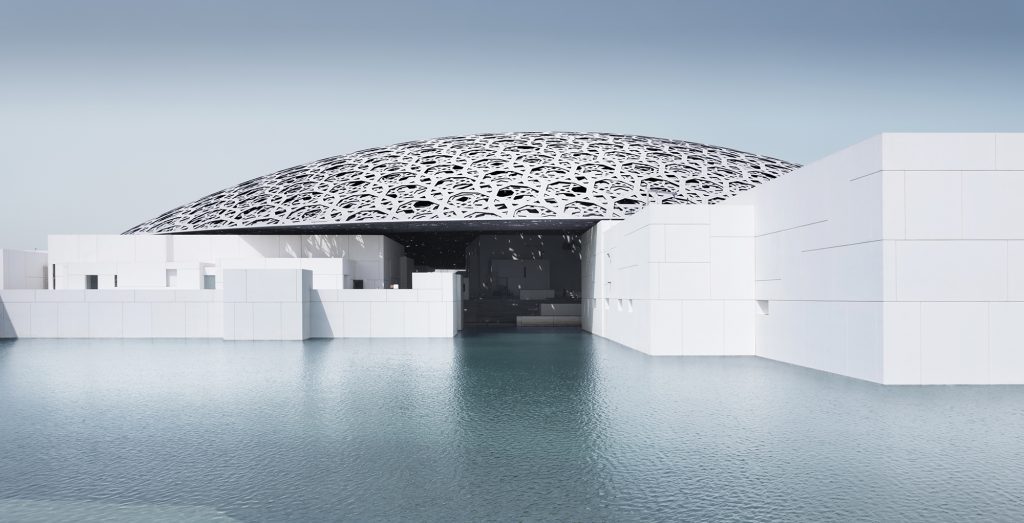
Everything started in 2007 when the cultural partnership between France and United Arab Emirates was officially announced to the public. The idea of existence of a Louvre Museum in Abu Dhabi was very important to highlight the universality of art and culture, and the role that Middle East plays in the sector. To achieve this goal and provide guidance and expertise to the authorities of the United Arab Emirates, Agence France-Museums was set up. Under its roof, 17 most prestigious institutions of France including the Louvre Museum, Orsay Museum and Pompidou Center were brought together. These institutions started working together to provide support to the project. Even important posts of the museum are filled by people coming from these institutions.
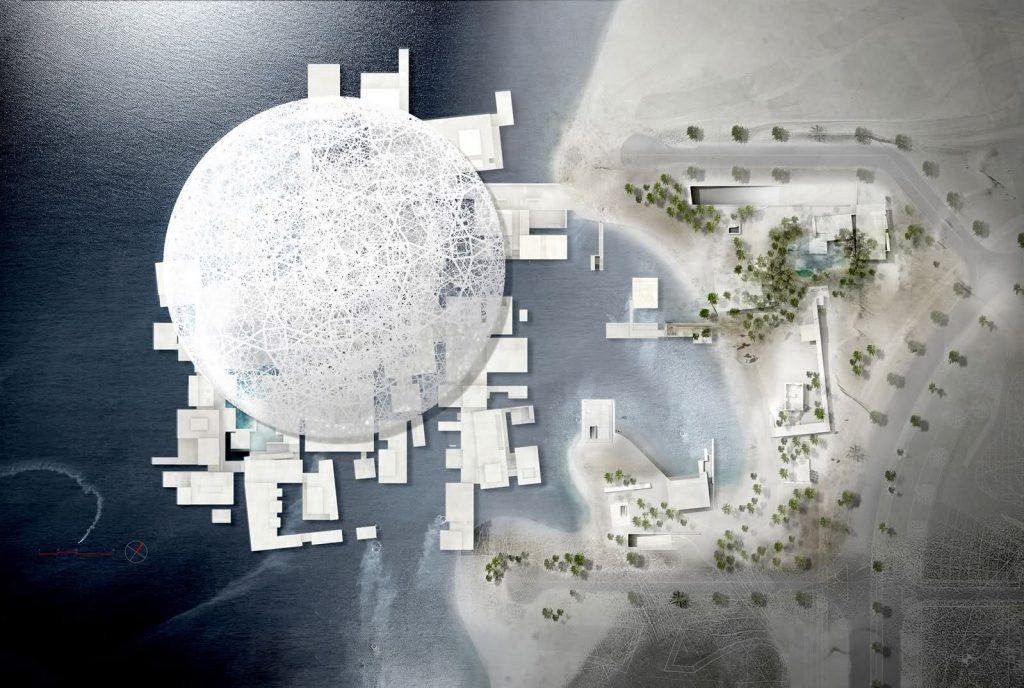
Finding the perfect location and building for the museum was of vital significance. The major challenge was to create an iconic building that would be capable of representing the universality of the museum. For that reason, Pritzker-prize winner, French architect, Jean Nouvel was assigned as the head architect. Under his supervision, a museum city on Saadiyat Island was created. Today, the museum is made of building series that take inspiration from the low-lying settlements of the area. Made of a total of 55 buildings, the museum city includes galleries, children’s museum, restaurant, cafes and shops.
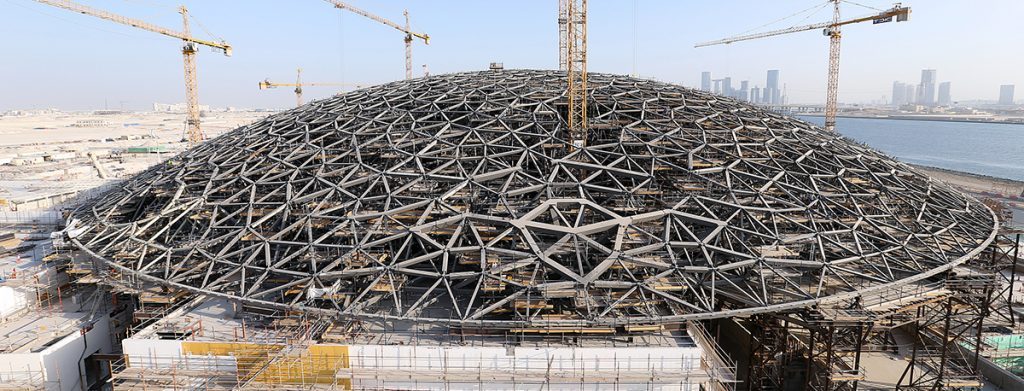
The most iconic element of the project is the dome, which covers the majority of the museum city. It consists of 8 different layers, 180 meters in diameter, held aloft with four massive invisible towers. The dome itself is referred as a work of art. Made of stainless steel and aluminium, this gigantic dome is a result of a geometric design which is a reference to Arabian architecture such as mosque, mausoleum and madrasa. It comprises of 7.850 unique stars set in a geometric pattern. These starts are visible from both inside and out, filter the light and create a cinematic effect that is called the ‘rain of light’.
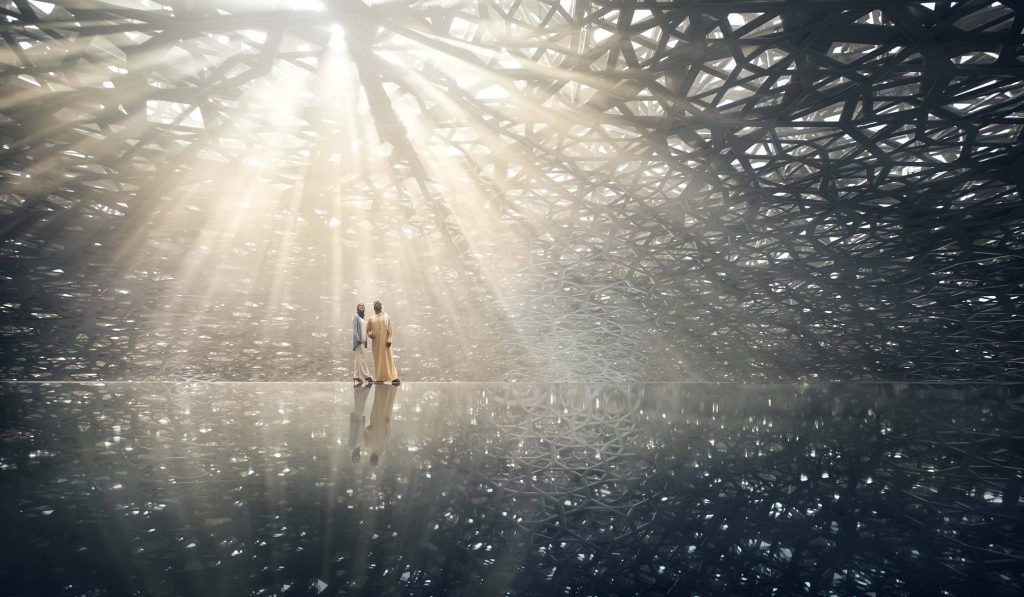
Louvre Abu Dhabi is a universal museum which aims at reflecting shared human stories across civilizations and cultures. Its collection certainly represents this mission. Director of the museum, Manuel Rebaté says ‘’with a unique global narrative and a vision to explore the history of art in a fresh context, Louvre Abu Dhabi is a place where visitors can come to understand their own and others’ cultures. Its ground-breaking architecture complements a presentation of exceptional treasures that represent a snapshot of humanity’s creativity, and paves the way for new discussions.”
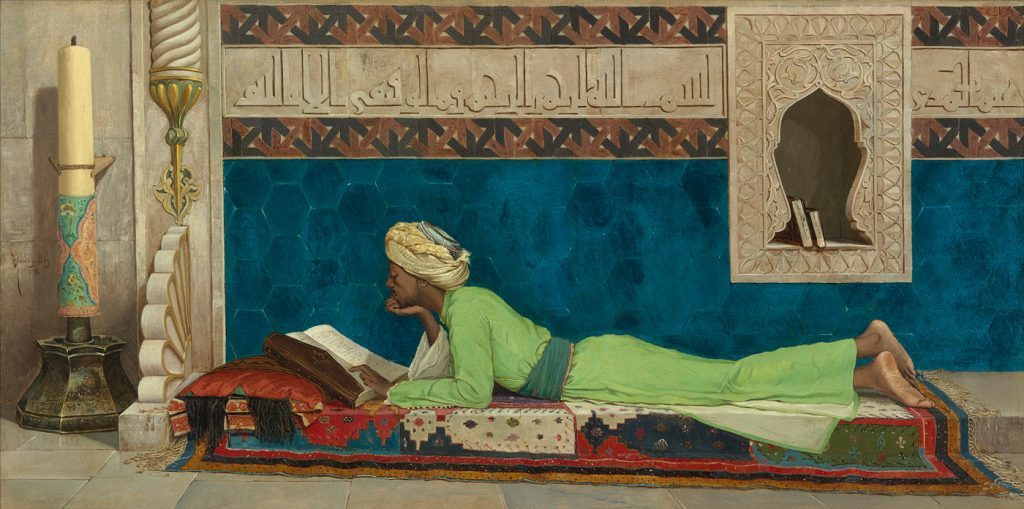
The museum collection made of artefacts, artworks and loans start from pre-historical times to Modern and Contemporary Art, covering different periods, geographies and civilizations on the way. 600 objects belong to the museum collection, whereas other 200 are taken on loan from 13 French institutions. These treasures are presented to the audience in 23 permanent galleries. The museum has many masterpieces such as Sarcophagi from Ancient Egypt, Ottoman Turban Helmet, Paul Gauguin’s Children Westling, Mondrian’s Composition with Blue, Red, Yellow and Black. The most important figure in Ottoman-Turkish painting, Osman Hamdi Bey also greets us in this museum. His oil-painting, Young Emir Studying is one of the star objects of Louvre Abu Dhabi.

The museum has temporary displays. 200 objects are loaned from 13 French institutions for 10 years. Among these are many masterpieces. Van Gogh’s Self-portrait, Da Vinci’s La Belle Ferronniere, Giacometti’s Sculpture Standing Woman II, Cezanne’s The Red Rock and more are now waiting to be seen in Louvre Abu Dhabi.

The Museum offers more. Louvre Abu Dhabi supports and promotes contemporary art. For this reason, two important artists are commissioned to produce site-specific works for the outdoor areas. Jenny Holzer created 3 engraved stone walls called For Louvre Abu Dhabi (2017), with inscriptions from historical texts. Italian Guiseppe Penone created Leaves of Light (2017), a vast bronze tree installation with mirrors. Another important contemporary name is Ai Wei Wei. Highly renowned artist’s Fountain of Light (2017) questions the notions of globalisation.
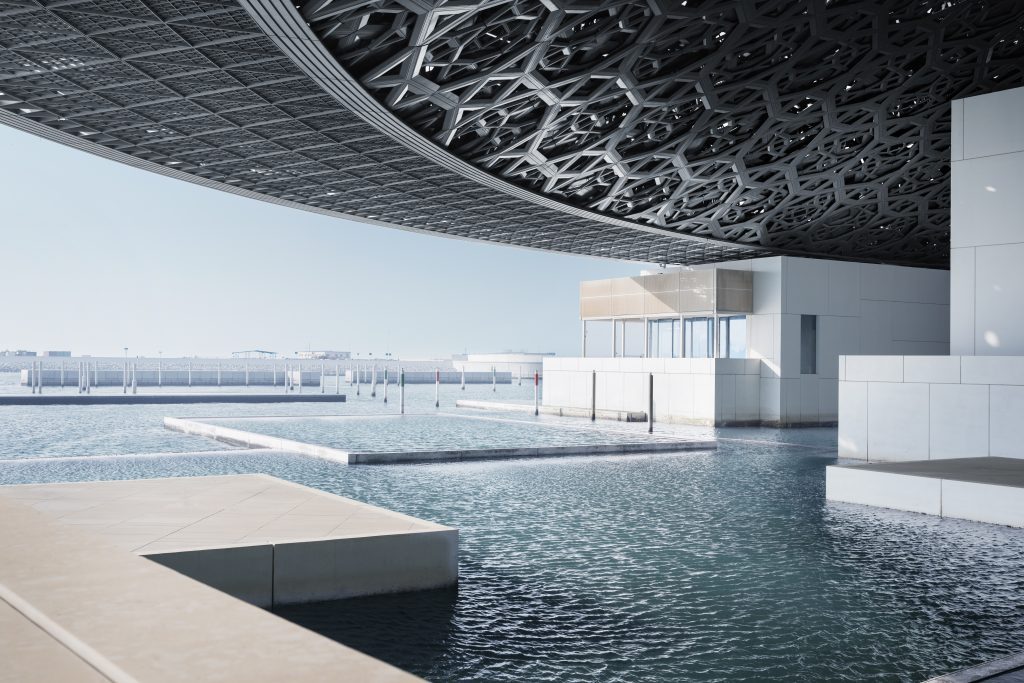
The inauguration exhibition ‘’From One Louvre to Another: Opening Museum for Everyone’’ will open on 27 December, 2017. Programmed and created by French Institutions, it will explore the history of the Louvre in Paris and will feature approximately 145 paintings, sculptures and decorative arts from Louvre and Château Versailles collections.
Louvre Abu Dhabi in Numbers:
• The name of Louvre is loaned for a period of 30.5 years
• Artworks from 13 French institutions are loaned for 10 years
• The creation of the museum was completed in a total of 10 and the construction was completed in 7 years
• The museum city covers nearly 64.000 sq meters
• For construction 50.000 sq meters sand was moved
• The dome covers two thirds of the museum
• The dome weights 7.500 tonnes- almost as heavy as the Eiffel Tower
• The dome has 7.850 star figures
• Interior exhibition spaces cover 8.600 sq meters
• The overall project cost approximately 600 million Euros
Simge Erdoğan

